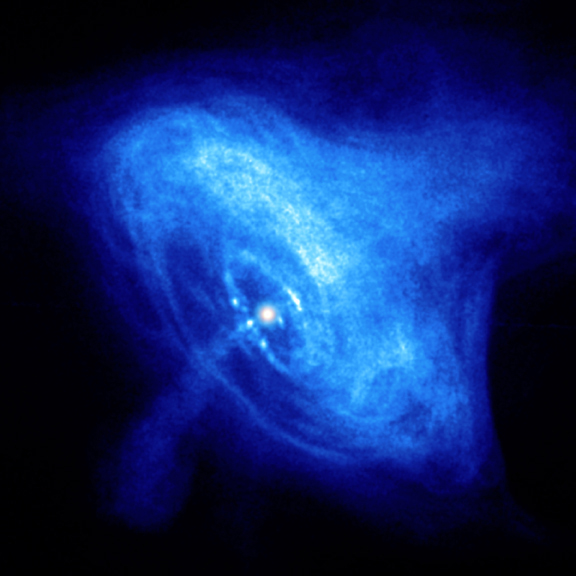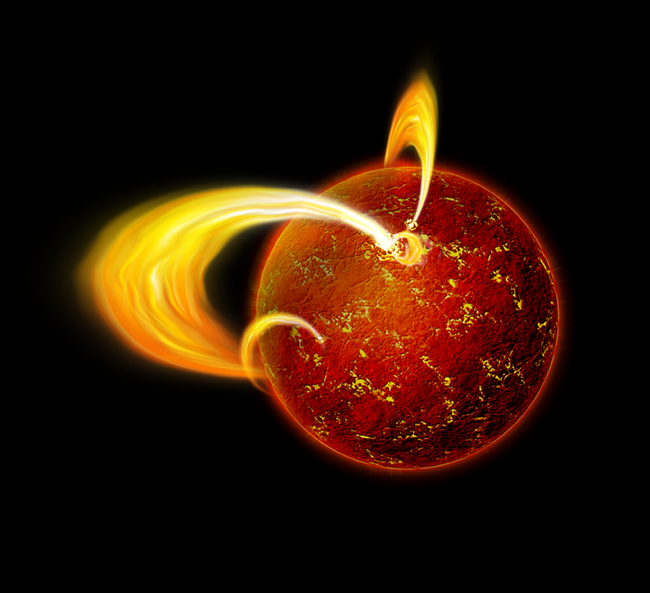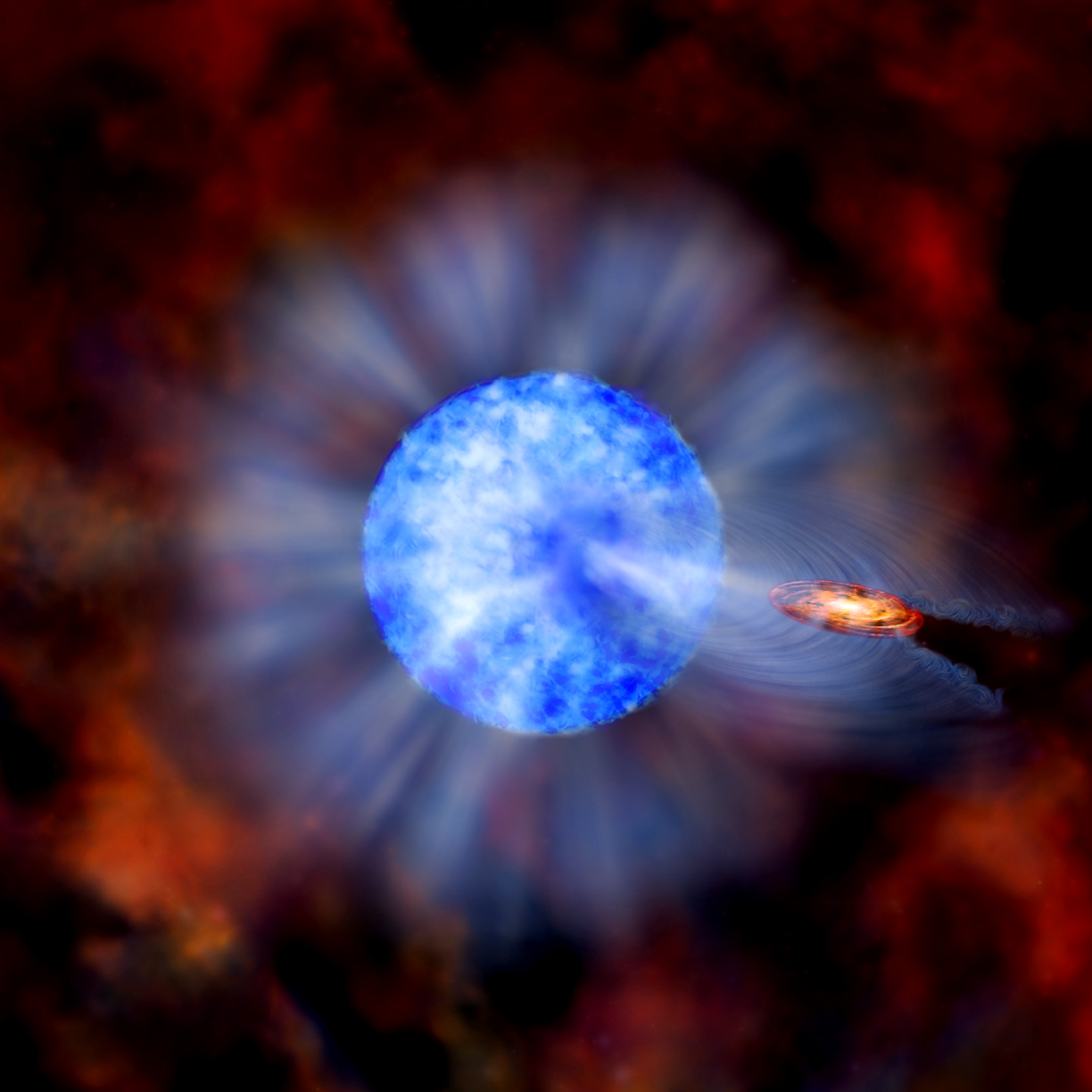Massive Stars (con't.)
Pulsars are spinning neutron stars that have jets of particles moving almost at the speed of light streaming out from the magnetic poles. These jets produce very powerful beams of high energy particles that emit x-rays. For a similar reason that "true north" and "magnetic north" are different on Earth, the magnetic and rotational axes of a pulsar are also misaligned. Therefore, the beam of particles and x-rays from the jets sweep around as the pulsar rotates, just as the spotlight in a lighthouse does. Like a ship in the ocean that sees only regular flashes of light, we see pulsars turn on and off as the beam sweeps over the Earth. The crab nebula – a Type II supernova event – contains a pulsar. Neutron stars have very intense magnetic fields, about 1,000,000,000,000 times stronger than Earth's own field. The combination of this strong magnetic field and the rapid rotation of the neutron star produces extremely powerful electric fields, with electric potential in excess of 1,000,000,000,000 volts. Electrons are accelerated to high velocities by these strong electric fields. These high-energy electrons produce radiation in two general ways: as a coherent plasma the electrons work together to produce radio emissions, and individually the electrons interact with photons or the magnetic filed to produce high-energy emissions such as X-rays and gamma-ray. The pulses of radiation match the rate of the rotation of the neutron star.
Magnetars are neutron stars that have super strong magnetic fields, ~ 100 trillion times as strong as the Earth's magnetic field. These fields are so intense that the solid neutron star crust buckles and shifts under its influence. The resulting star quakes could repeatedly generate brief flashes of hard X-rays and soft gamma-rays - giving rise to the rare but mysterious "soft gamma repeaters" - because magnetars seem to be rotating too slowly to produce the observed energy output. The Hubble image of N49, a Type II supernova remnant in the Large Magellanic Cloud, contains a magnetar which is now recognized as a soft gamma-ray repeater.
If the core remnant of a collapsed massive star exceeds ~2.4-3 solar masses, neutron degeneracy pressure cannot stop the complete and total collapse of the star. The neutrons get pushed into each other until the stellar core becomes a region with such extreme gravity and spacetime becomes so distorted that it becomes a black hole. At the center of the black hole is a region described as a gravitational singularity – a region where the spacetime curvature becomes infinite. The singularity is considered to have zero volume, and as it contains ~95% of the original stellar material, it is also considered to have infinite density. The singularity has a spherical boundary called the photon sphere which terminates at its outer surface at the event horizon. The extreme gravitational field within the event horizon emits no radiation as the escape velocity exceeds the speed of light. Black holes can be indirectly detected by their effect on the surrounding spacetime - including accretion disks and companion stars. Most stars are in binary or multiple star systems. The most massive stars in these systems spend the least amount of time on the main sequence before evolving into their final end products – usually supernova remnants and stellar mass black holes. Binary systems that include black holes are categorized as X-ray binaries because radiation from the system is strong in X-rays. The X-ray binary system M33 X-7 shown above consists of a 16 solar mass black hole orbiting a 70 solar mass companion. The black hole is surrounded by an accretion disk of material fed by wind from the blue companion star, which has been swept into orbit around the black hole. Rather than flowing unimpeded and uniformly into space, wind from the star is pulled towards the black hole by its powerful gravity. The wind that does make it past the black hole is disrupted, causing turbulence and ripples beyond the disk. The companion star itself is also distorted by the gravity from the black hole. The star is stretched slightly in the direction of the black hole, causing it to become less dense in this region and to appear darker.







